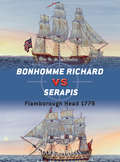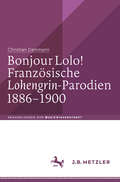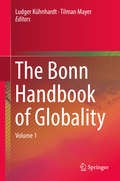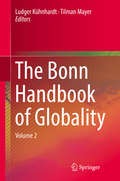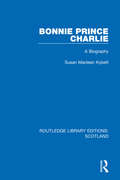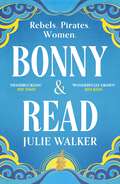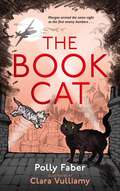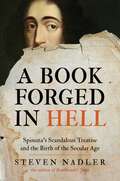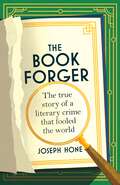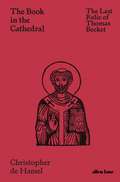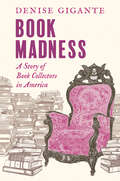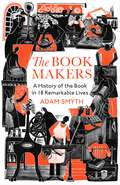- Table View
- List View
Bonhomme Richard vs Serapis: Flamborough Head 1779 (Duel #44)
by Peter Bull Giuseppe Rava Mark LardasThe clash between the American Bonhomme Richard and the British HMS Serapis during the American Revolutionary War is perhaps the most famous single-ship duel in history. This epic battle between two very similar ships – and crews – off the coast of Britain in September 1779 created two naval heroes: in victory, John Paul Jones became a figure that all future American naval officers would aspire to emulate, while Richard Pearson, in defeat, became a hero to the British for a tenacious defence that allowed the merchant vessels under his protection to escape. Featuring specially commissioned full-color artwork, this is the story of an epic maritime clash at the height of the Revolutionary War that provided a founding legend for generations of US naval officers and demonstrated the intrepidity and fighting prowess of the fledgling US Navy.
Bonhomme Richard vs Serapis: Flamborough Head 1779 (Duel #44)
by Peter Bull Giuseppe Rava Mark LardasThe clash between the American Bonhomme Richard and the British HMS Serapis during the American Revolutionary War is perhaps the most famous single-ship duel in history. This epic battle between two very similar ships – and crews – off the coast of Britain in September 1779 created two naval heroes: in victory, John Paul Jones became a figure that all future American naval officers would aspire to emulate, while Richard Pearson, in defeat, became a hero to the British for a tenacious defence that allowed the merchant vessels under his protection to escape. Featuring specially commissioned full-color artwork, this is the story of an epic maritime clash at the height of the Revolutionary War that provided a founding legend for generations of US naval officers and demonstrated the intrepidity and fighting prowess of the fledgling US Navy.
Bonjour Lolo! Französische »Lohengrin«-Parodien 1886–1900 (Abhandlungen zur Musikwissenschaft)
by Christian DammannWenn Parodien auf eine Person und ihre Werke trotz allen Spotts Wertschätzung bezeugen, so hat Richard Wagner Ende des 19. Jahrhunderts in Frankreich die höchsten Weihen erfahren. Schon dessen erste Pariser Auftritte als Dirigent 1860 inspirierten Offenbach, darauf mokant in szenisch-musikalischer Form zu reagieren. Der erst 1891 mit "Lohengrin" einsetzende Siegeszug von Wagners Opern auf den staatlichen Bühnen Frankreichs zog eine Welle nicht minder erfolgreicher Parodien nach sich, die – landesweit aufgeführt in kleinen Theatern, Cafés-Concerts und im Guignol (Puppenspiel) – den Schwanenritter namentlich im Brautgemach von einer wenig heldenhaften Seite zeigen. Dieses Buch will dazu einladen, sich mit einem kaum beleuchteten Aspekt der französischen Wagnerrezeption auseinanderzusetzen.
The Bonn Handbook of Globality: Volume 1
by Ludger Kühnhardt Tilman MayerThis two-volume handbook provides readers with a comprehensive interpretation of globality through the multifaceted prism of the humanities and social sciences. Key concepts and symbolizations rooted in and shaped by European academic traditions are discussed and reinterpreted under the conditions of the global turn. Highlighting consistent anthropological features and socio-cultural realities, the handbook gathers coherently structured articles written by 110 professors in the humanities and social sciences at Bonn University, Germany, who initiate a global dialogue on meaningful and sustainable notions of human life in the age of globality.Volume 1 introduces readers to various interpretations of globality, and discusses notions of human development, communication and aesthetics.Volume 2 covers notions of technical meaning, of political and moral order, and reflections on the shaping of globality.
The Bonn Handbook of Globality: Volume 2
by Ludger Kühnhardt Tilman MayerThis two-volume handbook provides readers with a comprehensive interpretation of globality through the multifaceted prism of the humanities and social sciences. Key concepts and symbolizations rooted in and shaped by European academic traditions are discussed and reinterpreted under the conditions of the global turn. Highlighting consistent anthropological features and socio-cultural realities, the handbook gathers coherently structured articles written by 110 professors in the humanities and social sciences at Bonn University, Germany, who initiate a global dialogue on meaningful and sustainable notions of human life in the age of globality.Volume 1 introduces readers to various interpretations of globality, and discusses notions of human development, communication and aesthetics.Volume 2 covers notions of technical meaning, of political and moral order, and reflections on the shaping of globality.
Bonner Enzyklopädie der Globalität
by Ludger Kühnhardt Tilman MayerIm Zentrum der Enzyklopädie steht die Frage, ob und inwieweit Europa im Zeitalter der Globalität durch Kontinuität und Wandel Referenzrahmen für Begriffsbildungen, Symbolisierungen und Sinndeutungen in den Geistes- und Kulturwissenschaften bleibt. Angesichts weltweiter Diskurse zur Globalität wird exemplarisch nach den Konsequenzen des global turn für den seit der Aufklärung erhobenen Anspruch Europas auf geistes- und kulturwissenschaftliche Deutungshoheit gefragt. Bezogen auf die geistes- und kulturwissenschaftliche Perspektive lautet die Kernfrage der Enzyklopädie: Wie verändert Globalität Europa und wie verändert Europa die Globalität? Grundsätzlich und am Beispiel wichtiger Sachverhalte und Begriffe aus den Lebenssphären des Menschen untersuchen mehr als einhundert Professoren der Rheinischen Friedrich-Wilhelms-Universität Bonn, wie der global turn die geistes- und kulturwissenschaftliche Begriffsbildung prägt. Die Bonner Enzyklopädie der Globalität bietet weitreichende Denkanstöße zu der Frage, ob und auf welche Weise europäische Deutungsmuster und Begriffsbestimmungen durch Kontinuität und Wandel im Zeichen der Globalität universell bedeutsam bleiben.
Bonnie Dundee
by Rosemary SutcliffIt is seventeenth-century Scotland, and the Covenanters – those wanting religious freedom from the dictates of English rule – are gathering strength. Hugh Herriott, fresh from a Covenanting background, finds himself working for redcoat Colonel Claverhouse and his Lady Jean: first as the stable-lad and in later years, as galloper to Claverhouse. The tension mounts between the two sides of the divided country. Claverhouse, with Hugh always by his side, leads his troops in bloody battle against the Covenanters, through forest and valley, village and town, victory… and loss.
Bonnie Prince Charlie: A Biography (Routledge Library Editions: Scotland #14)
by Susan Maclean KybettOriginally published in 1988, this biography was the result of 15 years research, including unearthing 70,000 letters and documents among the Stuart Papers which had hitherto lain largely untapped. Written in many different languages, some were damaged, written in code, or unsigned and undated. Deciphering them therefore made it possible to gain a new level of insight into Bonnie Prince Charlie as a man, his relationship with his exiled father, the role played by France and the true nature of the events leading up to the bloody campaign of 1745 in which he attempted to win back the throne of his ancestors.
Bonnie Prince Charlie: A Biography (Routledge Library Editions: Scotland #14)
by Susan Maclean KybettOriginally published in 1988, this biography was the result of 15 years research, including unearthing 70,000 letters and documents among the Stuart Papers which had hitherto lain largely untapped. Written in many different languages, some were damaged, written in code, or unsigned and undated. Deciphering them therefore made it possible to gain a new level of insight into Bonnie Prince Charlie as a man, his relationship with his exiled father, the role played by France and the true nature of the events leading up to the bloody campaign of 1745 in which he attempted to win back the throne of his ancestors.
Bonnie Prince Charlie: Charles Edward Stuart
by Frank McLynnIn this highly acclaimed study Frank McLynn brings vividly before us the man Charles Edward Stuart who became known to legend as Bonnie Prince Charlie and whose unsuccessful challenge to the Hanoverian throne was followed by the crushing defeat at Culloden in 1746. He argues powerfully that failure was far from inevitable and history in 1745 came close to taking quite a different turn.
Bonnie Prince Charlie in Love
by Hugh DouglasRomantic hero of legend of charismatic self-seeker in love with himself and his cause? Which is the real Charles Edward Stuart? Hugh Douglas goes beyond the flaws of Bonnie Prince Charlie's character to prove that here was a man capable not only of deep and enduring passion, but also love.
The Bonny Bride (Mills And Boon Historical Ser.)
by Deborah HaleJenny Lennox didn't believe in love. Not the lasting kind, anyway. Life was too hard for romance to survive for long. Marriage for money was best, she was sure–or had been until she met Harris Chisholm, earnest and penniless yet willing to gamble on life, love–and her!
Bonny & Read
by Julie Walker'A cracking read. . . Fascinating, complex characters and a real page-turner!'LIZ HYDER, author of THE GIFTS 'Bonny and Read has it all. Adventure, atmosphere, sizzling suspense and unforgettable characters. Such a brilliant debut!'SD SYKES, author of THE GOOD DEATH'A deftly told tale of the complexities of friendship, female identity & freedom, featuring two remarkable women determined to define their own destinies . . . the pages turn themselves'ANITA FRANK, author of THE LOST ONES'What a debut! A fabulous, dangerous sea-shanty of a story' KATIE MUNNIK, author of THE AERIALISTSRebels. Pirates. Women. Caribbean, 1720. Two extraordinary women are on the run - from their pasts, from the British Navy and the threat of execution, and from the destiny that fate has written for them.Plantation owner's daughter, runaway wife, pirate - Anne Bonny has forged her own story in a man's world. But when she is involved in the capture of a British merchant ship, she is amazed to find another woman amongst the crew, with a history as unconventional as her own. Dressed as a boy from childhood, Mary Read has been a soldier, a sailor, a widow - but never a woman in charge of her own destiny.As their exhilarating, tumultuous exploits find fame, the ballad of Bonny and Read is sung from shore to shore - but when you swim against the tide of history, freedom is a dangerous thing...An exuberant reimagining of the extraordinary story of Bonny & Read - trailblazing, boundary-defying, swashbuckling heroines whose story deserves to be known. Perfect for fans of Ariadne, The Mercies and The Familiars.
Bonzo's War: Animals Under Fire 1939 -1945
by Clare CampbellWhat was it like to be a dog or cat when the world was at war? When food was rationed and cities were bombed? Pets (on the whole) do not write memoirs, so to find the answer to that question, Clare Campbell went in search of voices of those people whose lives were entwined with animals.She found stories - inspiring and harrowing - of animals under fire, of evacuated and homeless pets, of brave animals who provided comfort to humans while the bombs fell. Of pets unwittingly entangled in war, like the Dunkirk pets and the camp followers who switched sides to stay alive; and the 6,000 dogs recruited by the British Army - loaned for duty by their families - many never to return. Meanwhile with food in short supply, government officials launched a ruthless campaigns against pets... Thoroughly researched and deeply moving, Bonzo's War gives a fascinating account of, and platform for, the forgotten stories as yet unheard, of the creatures big and small caught up in a human conflict far beyond understanding.
The Book Cat (Marshmallow Pie The Cat Superstar Ser. #Book 1)
by Polly FaberThis is a classic wartime tale of a (real!) cat who made his home at the Faber offices and decided he'd never leave.'This time we need to get you - get all of the kittens, safe out of London,' said Morgan decisively . . . 'To have a chance for a better life, well, let's just say, I've got an idea.'Morgan is a young orphan who lives off scavenging - until he finds a cosy home at a famous London publishing house. Over time he learns a trade - and soon becomes the very best book cat in the business. And then the Blitz begins. Morgan finds himself training up twenty odd kittens to be book cats, and then there is the small matter of secretly evacuating them out of London. Happily, Morgan has a plan.Set in war-torn London, charmingly illustrated, and full of heart and verve.
The Book Collectors of Daraya: A Band of Syrian Rebels, Their Underground Library, and the Stories that Carried Them Through a War
by Delphine Minoui‘This is an urgent and compelling account of great bravery and passion. Delphine Minoui has crafted a book that champions books and the individuals who risk everything to preserve them.’ Susan Orlean, author of The Library Book In 2012 the rebel suburb of Daraya in Damascus was brutally besieged by Syrian government forces. Four years of suffering ensued, punctuated by shelling, barrel bombs and chemical gas attacks. People’s homes were destroyed and their food supplies cut off; disease was rife. Yet in this man-made hell, forty young Syrian revolutionaries embarked on an extraordinary project, rescuing all the books they could find in the bombed-out ruins of their home town. They used them to create a secret library, in a safe place, deep underground. It became their school, their university, their refuge. It was a place to learn, to exchange ideas, to dream and to hope. Based on lengthy interviews with these young men, conducted over Skype by the award-winning French journalist Delphine Minoui, The Book Collectors of Daraya is a powerful testament to freedom, tolerance and the power of literature.
Book Destruction from the Medieval to the Contemporary (New Directions in Book History)
by Gill PartingtonThis rich and varied collection of essays by scholars and interviews with artists approaches the fraught topic of book destruction from a new angle, setting out an alternative history of the cutting, burning, pulping, defacing and tearing of books from the medieval period to our own age.
A Book Forged in Hell: Spinoza’s Scandalous Treatise and the Birth of the Secular Age
by Steven NadlerWhen it appeared in 1670, Baruch Spinoza's Theological-Political Treatise was denounced as the most dangerous book ever published--"godless," "full of abominations," "a book forged in hell . . . by the devil himself." Religious and secular authorities saw it as a threat to faith, social and political harmony, and everyday morality, and its author was almost universally regarded as a religious subversive and political radical who sought to spread atheism throughout Europe. Yet Spinoza's book has contributed as much as the Declaration of Independence or Thomas Paine's Common Sense to modern liberal, secular, and democratic thinking. In A Book Forged in Hell, Steven Nadler tells the fascinating story of this extraordinary book: its radical claims and their background in the philosophical, religious, and political tensions of the Dutch Golden Age, as well as the vitriolic reaction these ideas inspired. It is not hard to see why Spinoza's Treatise was so important or so controversial, or why the uproar it caused is one of the most significant events in European intellectual history. In the book, Spinoza became the first to argue that the Bible is not literally the word of God but rather a work of human literature; that true religion has nothing to do with theology, liturgical ceremonies, or sectarian dogma; and that religious authorities should have no role in governing a modern state. He also denied the reality of miracles and divine providence, reinterpreted the nature of prophecy, and made an eloquent plea for toleration and democracy. A vivid story of incendiary ideas and vicious backlash, A Book Forged in Hell will interest anyone who is curious about the origin of some of our most cherished modern beliefs.
A Book Forged in Hell: Spinoza’s Scandalous Treatise and the Birth of the Secular Age (PDF)
by Steven NadlerWhen it appeared in 1670, Baruch Spinoza's Theological-Political Treatise was denounced as the most dangerous book ever published--"godless," "full of abominations," "a book forged in hell . . . by the devil himself." Religious and secular authorities saw it as a threat to faith, social and political harmony, and everyday morality, and its author was almost universally regarded as a religious subversive and political radical who sought to spread atheism throughout Europe. Yet Spinoza's book has contributed as much as the Declaration of Independence or Thomas Paine's Common Sense to modern liberal, secular, and democratic thinking. In A Book Forged in Hell, Steven Nadler tells the fascinating story of this extraordinary book: its radical claims and their background in the philosophical, religious, and political tensions of the Dutch Golden Age, as well as the vitriolic reaction these ideas inspired. It is not hard to see why Spinoza's Treatise was so important or so controversial, or why the uproar it caused is one of the most significant events in European intellectual history. In the book, Spinoza became the first to argue that the Bible is not literally the word of God but rather a work of human literature; that true religion has nothing to do with theology, liturgical ceremonies, or sectarian dogma; and that religious authorities should have no role in governing a modern state. He also denied the reality of miracles and divine providence, reinterpreted the nature of prophecy, and made an eloquent plea for toleration and democracy. A vivid story of incendiary ideas and vicious backlash, A Book Forged in Hell will interest anyone who is curious about the origin of some of our most cherished modern beliefs.
The Book Forger: The true story of a literary crime that fooled the world
by Joseph Hone'Absolutely fascinating . . . A must-read for anyone enthralled by the value and integrity of books' Janice Hallett, author of The Alperton AngelsA true detective story from the age of Agatha Christie and Dorothy L. Sayers: the literary crime that fooled the world - and the daring young booksellers who uncovered itLondon, 1932. Thomas James Wise is the toast of the literary establishment. A prominent collector and businessman, he is renowned on both sides of the Atlantic for unearthing the most stunning first editions and bringing them to market. Pompous and fearsome, with friends in high places, he is one of the most powerful men in the field of rare books.One night, two young booksellers - one a dishevelled former communist, the other a martini-swilling fan of detective stories - stumble upon a strange discrepancy. It will lead them to suspect Wise and his books are not all they seem. Inspired by the vogue for Hercule Poirot and Sherlock Holmes, the pair harness the latest developments in forensic analysis to crack the case, but find its extent is greater than they ever could have imagined. By the time they are done, their investigation will have rocked the book world to its core.This is the true story of unlikely friends coming together to expose the literary crime of the century, and of a maverick bibliophile who forged not only books but an entire life, erasing his past along the way.'The perfect piece of armchair detection' Ruth Ware, author of The Woman in Cabin 10‘Thrilling . . . reads like a detective story from the golden age’ Roland Philipps, author of A SPY NAMED ORPHAN'A great story that is truly stranger than fiction' Martin Edwards, President of the Detection Club
The Book Ghost
by Lorna GrayA page turning, literary post-war historical novel full of secrets and mysteries.
Book Illustration, Taxes and Propaganda: the Fermiers généraux edition of La Fontaine's Contes et nouvelles en vers of 1762 (Oxford University Studies in the Enlightenment #2006:11)
by David AdamsLa Fontaine's Contes et nouvelles en vers was probably the most famous illustrated book to have appeared in France during the eighteenth century. The celebrated 1762 edition, published by Louis XV's detested tax-gatherers, the Compagnie des Fermiers généraux, held among its claims to supremacy its magnificent copperplate illustrations, designed by Charles Eisen. In this highly illustrated book, David Adams first sets out a publishing history of the edition, using historical, bibliographical and cultural evidence, and next provides a detailed study of the plates as a whole. In so doing, he gives his interpretation of the values and attitudes of the Compagnie, the members of which took great care to ensure that the plates reflected their view of contemporary society. Finally, he gives a synoptic view of the illustrations, and situates the work in the wider context of contemporary French illustrated books. This pioneering study of the relationship between text and image in eighteenth-century France shows that the illustrations the Fermiers généraux commissioned for this literary classic were intended to promote their own patrician values, and to assert their freedom of action, turning literature into propaganda with consequences they did not foresee.
The Book in the Cathedral: The Last Relic of Thomas Becket
by Christopher de HamelFrom the bestselling author of Meetings With Remarkable Manuscripts, a captivating account of the last surviving relic of Thomas Becket The assassination of Thomas Becket in Canterbury Cathedral on 29 December 1170 is one of the most famous events in European history. It inspired the largest pilgrim site in medieval Europe and many works of literature from Chaucer's Canterbury Tales to T. S. Eliot's Murder in the Cathedral and Anouilh's Becket.In a brilliant piece of historical detective work, Christopher de Hamel here identifies the only surviving relic from Becket's shrine: the Anglo-Saxon Psalter which he cherished throughout his time as Archbishop of Canterbury, and which he may even have been holding when he was murdered.Beautifully illustrated and published to coincide with the 850th anniversary of the death of Thomas Becket, this is an exciting rediscovery of one of the most evocative artefacts of medieval England.
Book Madness: A Story of Book Collectors in America
by Denise GiganteThe fascinating history of American bookishness as told through the sale of Charles Lamb’s library in 1848 Charles Lamb’s library—a heap of sixty scruffy old books singed with smoke, soaked with gin, sprinkled with crumbs, stripped of illustrations, and bescribbled by the essayist and his literary friends—caused a sensation when it was sold in New York in 1848. The transatlantic book world watched as the relics of a man revered as the patron saint of book collectors were dispersed. Following those books through the stories of the bibliophiles who shaped intellectual life in America—booksellers, publishers, journalists, editors, bibliographers, librarians, actors, antiquarians, philanthropists, politicians, poets, clergymen—Denise Gigante brings to life a lost world of letters at a time when Americans were busy assembling the country’s major public, university, and society libraries. A human tale of loss, obsession, and spiritual survival, this book reveals the magical power books can have to bring people together and will be an absorbing read for anyone interested in what makes a book special.
The Book-Makers: A History of the Book in 18 Remarkable Lives
by Adam SmythA celebration of the printed book, told through the lives of 18 people who took it in radical new directions.‘Amazing. This book is a soul-expanding celebration of the human spirit’ MARTIN LATHAM, author of The Bookseller's Tale‘Will delight any booklover’ ROLAND ALLEN, author of The NotebookThis is an extraordinary story of skill, craft, mess, cunning, triumph, improvisation, and error. Of printers and binders, publishers and artists, paper-makers and library founders.Some we know. We meet jobbing printer (and United States Founding Father) Benjamin Franklin, and watch Thomas Cobden-Sanderson conjure books that flicker between the 20th and 15th centuries. Others we’ve forgotten. We don't recall Sarah Eaves, wife of John Baskerville, and her crucial contribution to the history of type. Nor Charles Edward Mudie, populariser of the circulating library – and the most influential figure in publishing before Jeff Bezos. Nor William Wildgoose, who meticulously bound Shakespeare’s First Folio, then disappeared.The Book-Makers puts people back into the story of the book. It takes us inside the print-shop as the deadline looms and the adrenaline flows – from the Fleet Street of 1492 to present-day New York. It’s a tale of contingencies and quirks, of successes and failures, of routes forward and paths not taken. This is a history of book-making that leaves ink on your fingers, and shows why the printed book will continue to flourish.‘Evocative and fascinating’ EMMA SMITH, author of Portable Magic‘A brilliant time machine of a book’ JOSEPH HONE, author of The Book Forger

